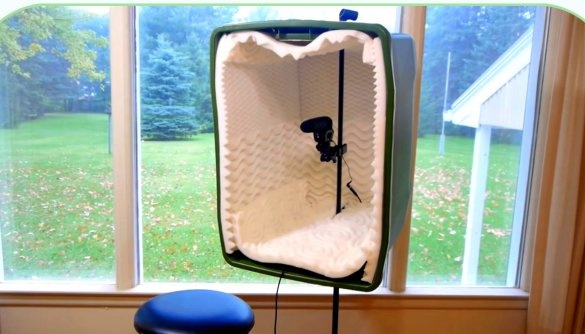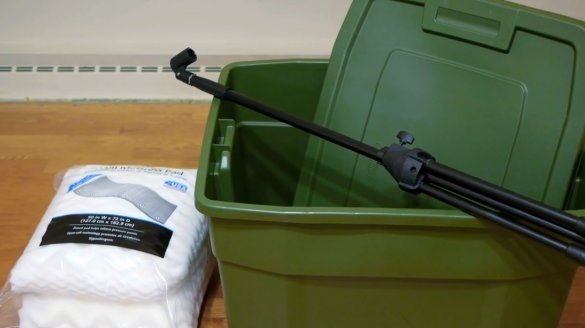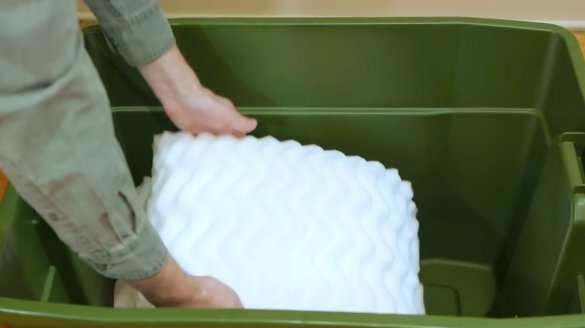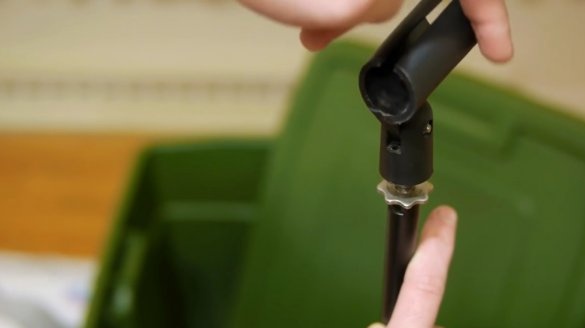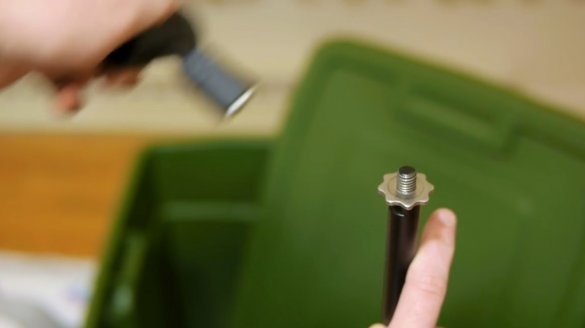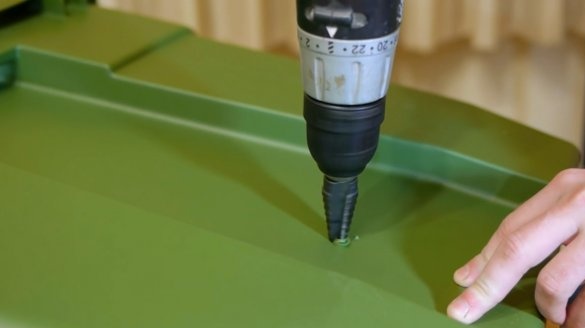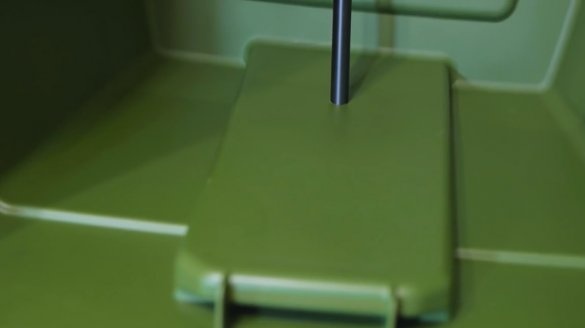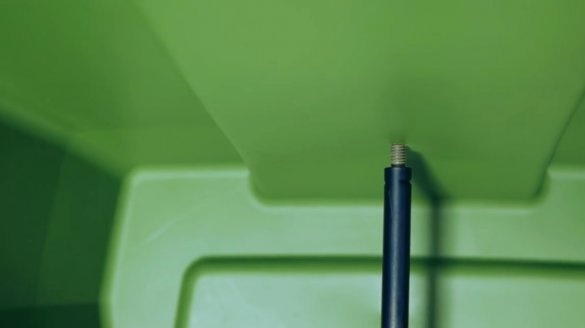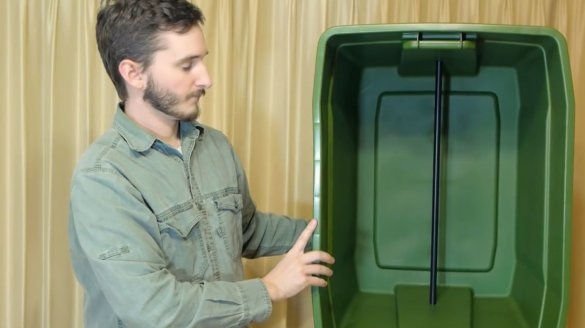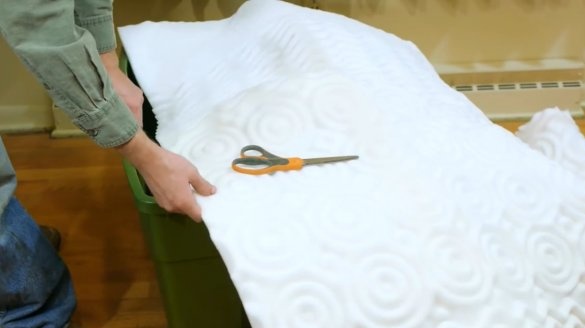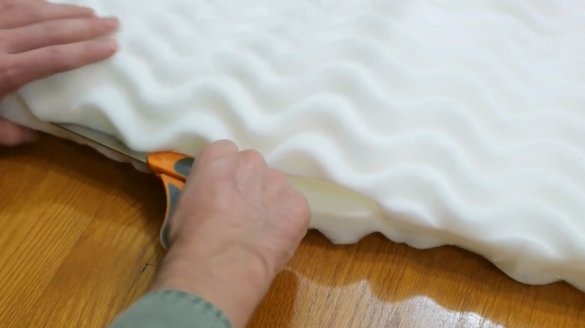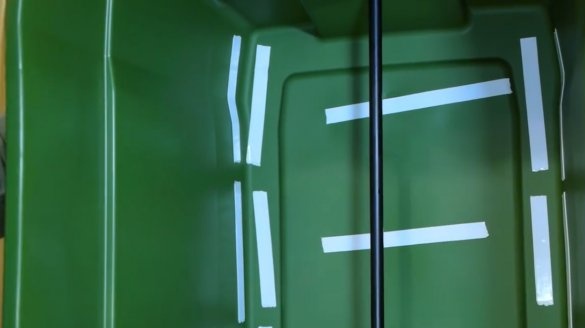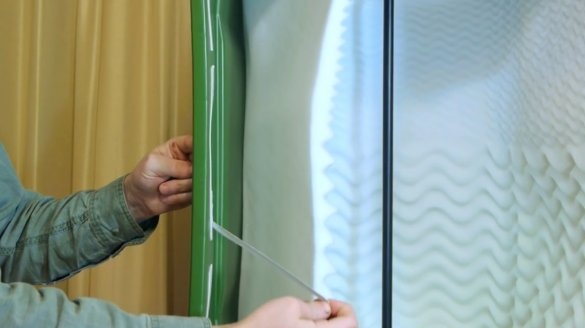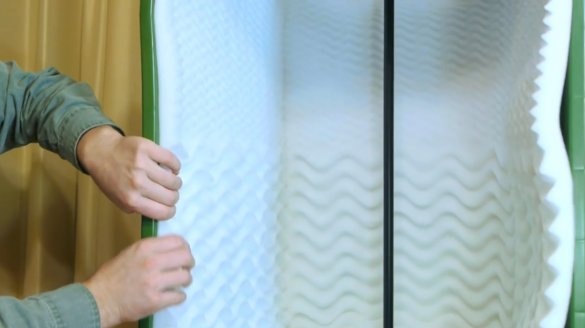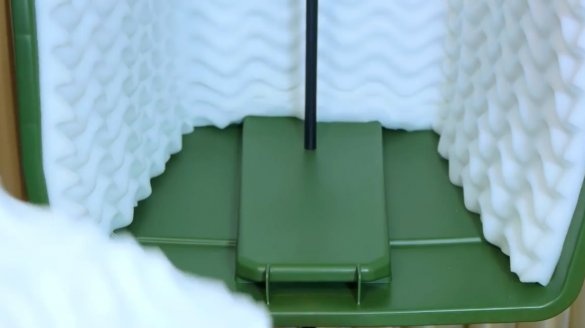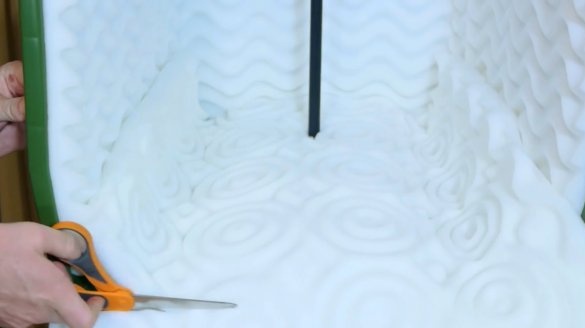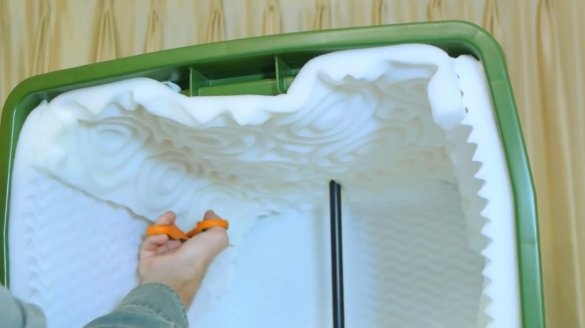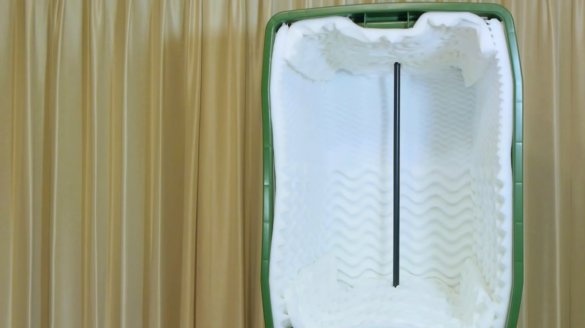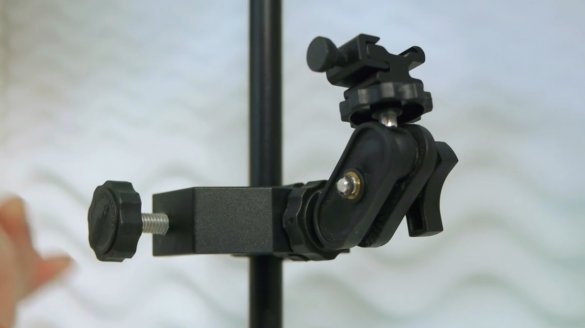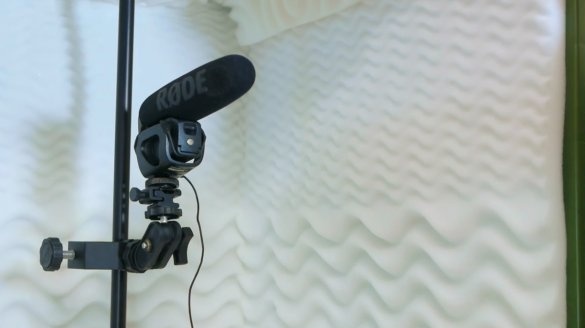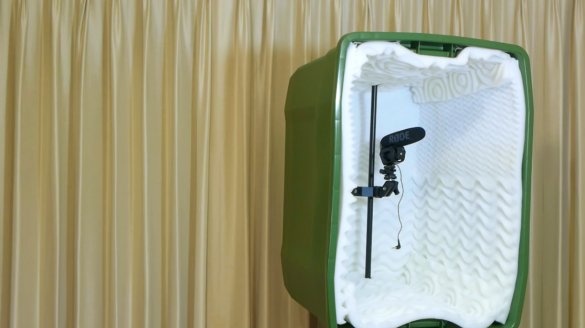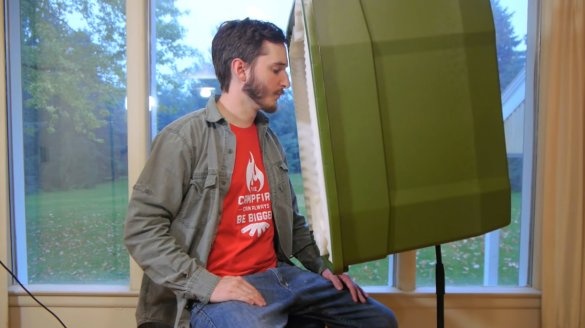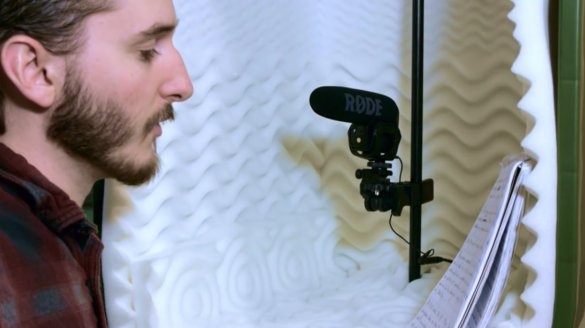In this article, the author of the YouTube channel "NightHawkInLight" will tell you how to make a soundproof box for a microphone.
This homemade product is very easy to manufacture, and it will not be difficult to repeat it.
Materials
- Plastic container
- Texture foam
- Double-sided tape
- Tripod, microphone.
Instruments, used by the author.
—
—
- Scissors.
Manufacturing process.
The necessary components for this are a large plastic box, two mattress foam rolls for a single bed and a tripod for a microphone. The last item is optional. It all depends on whether this box is mobile or stationary.
First, the author screws the top of the tripod and, taking the diameter of the rod as a basis, drills a hole for it on one side of the plastic box. On the opposite side of the box, a hole is also made with a stepped drill, but it will be exactly such that the thread of the tripod passes onto it, onto which the nozzles are screwed, or the camera.
A tripod inserted in the top hole now supports the box.
He measures and cuts the first section of rectangular foam. It is the longest and three vertical walls immediately turn around it.
Foam rubber is attached to the plastic using double-sided tape. Particularly noteworthy are the angles of the tank.
Next, the bottom of the camera is sheathed. The author simply takes a strip of foam rubber of the required width, after making a small slot in the center for a tripod / support.
After the foam has laid down in its place, you can trim the excess material. No adhesive tape is needed for the lower section; gravity itself does everything necessary.
The upper segment is measured in the same way, with the only difference being that adhesive tape is required here.
The way the microphone will be mounted on a tripod depends on its type. But in any case, the microphone is desirable to maintain mobility. Then it will be possible to regulate and direct.
Perhaps the reader is somewhat puzzled by how this device will prove itself in action.
Taking into account that the microphone is deployed into the outer space, the purpose of the isolation box is not so much to change the sound waves going into the microphone as to absorb sound even before it has the opportunity to bounce off the walls of the room and return as an echo.
In addition, the person conducting the recording, and sitting opposite the microphone, inevitably covers the gap with his own body, further isolating the microphone from unnecessary noise.
Thanks to the author for a simple but useful device for a small recording studio!
All good mood, good luck, and interesting ideas!
Author video can be found here.

